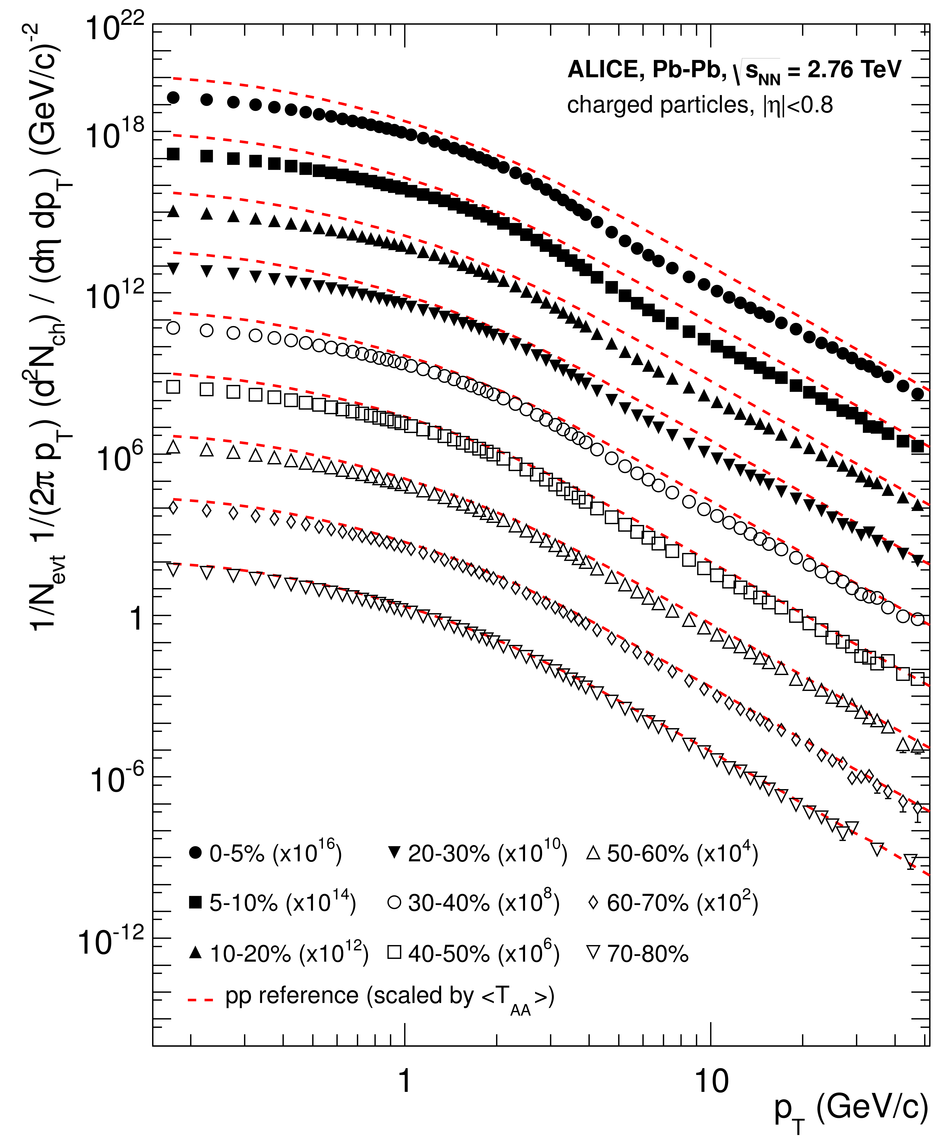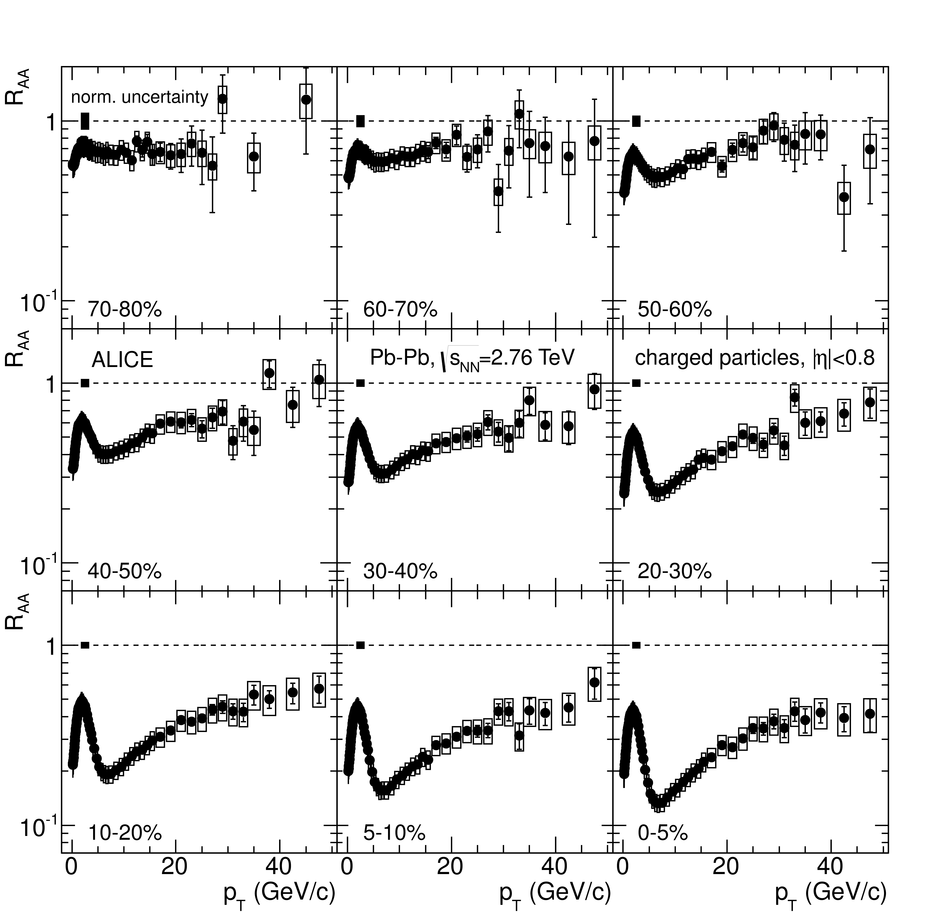The inclusive transverse momentum ($p_{\rm T}$) distributions of primary charged particles are measured in the pseudo-rapidity range $|\eta|<~0.8$ as a function of event centrality in Pb-Pb collisions at $\sqrt{s_{\rm{NN}}}=2.76$ TeV with ALICE at the LHC. The data are presented in the $p_{\rm T}$ range $0.15<~p_{\rm T}<~50$ GeV/$c$ for nine centrality intervals from 70-80% to 0-5%. The Pb-Pb spectra are presented in terms of the nuclear modification factor $R_{\rm{AA}}$ using a pp reference spectrum measured at the same collision energy. We observe that the suppression of high-$p_{\rm T}$ particles strongly depends on event centrality. In central collisions (0-5%) the yield is most suppressed with $R_{\rm{AA}}\approx0.13$ at $p_{\rm T}=6$-7 GeV/$c$. Above $p_{\rm T}=7$ GeV/$c$, there is a significant rise in the nuclear modification factor, which reaches $R_{\rm{AA}} \approx0.4$ for $p_{\rm T}>30$ GeV/$c$. In peripheral collisions (70-80%), the suppression is weaker with $R_{\rm{AA}} \approx 0.7$ almost independently of $p_{\rm T}$. The measured nuclear modification factors are compared to other measurements and model calculations.
Phys. Lett. B 720 (2013) 52-62
HEP Data
e-Print: arXiv:1208.2711 | PDF | inSPIRE
CERN-PH-EP-2012-233




